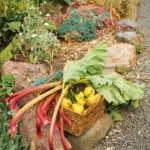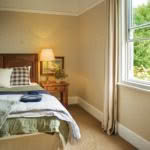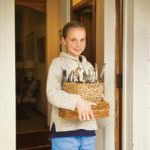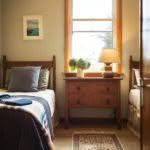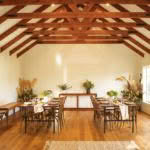The majestic farm at the edge of the world
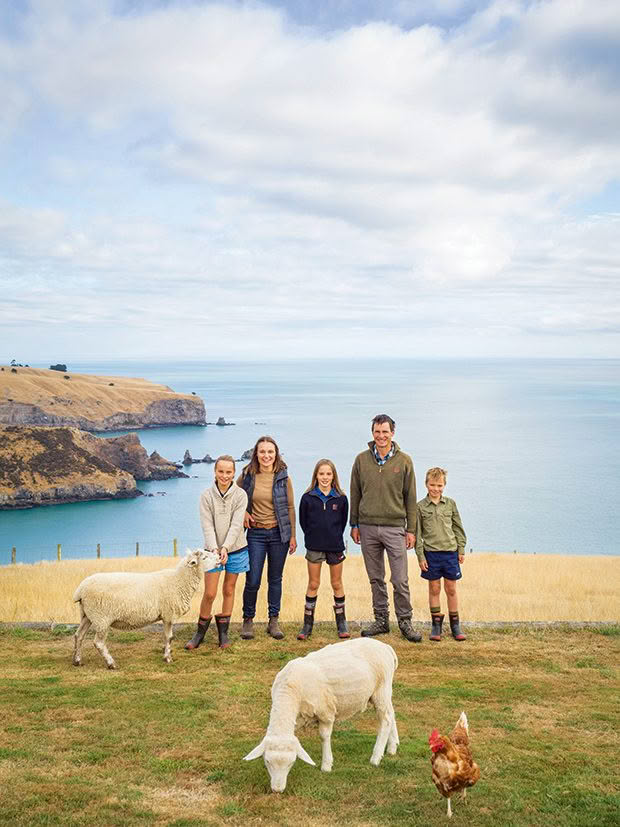
The farm’s current residents are the sixth generation on the land — and if the children’s interests are anything to go by, they will probably be the seventh. (From left to right) Harriet (13), Annabel, Charlotte (12), Hamish and George (9).
Six generations of a Canterbury family have brought fresh ideas to the distinctive rolling hills of their Banks Peninsula farm. The efforts of the current owners blend accommodation initiatives with regeneration projects.
Words: Sarah Templeton Photos: Rachael McKenna
Annabel Craw remembers reading a book at school about a group of high-schoolers who go camping in a hidden spot in the Australian bush. Emerging days later, they find the country has devolved into a war. From her home on the Banks Peninsula, looking out over the gently waving cocksfoot grass to the horizon, she observes that there are spots on her family farm where it feels similar: if the world were to end, it could be a while before the news trickled over the hills to alert the residents of Ridgecliff.
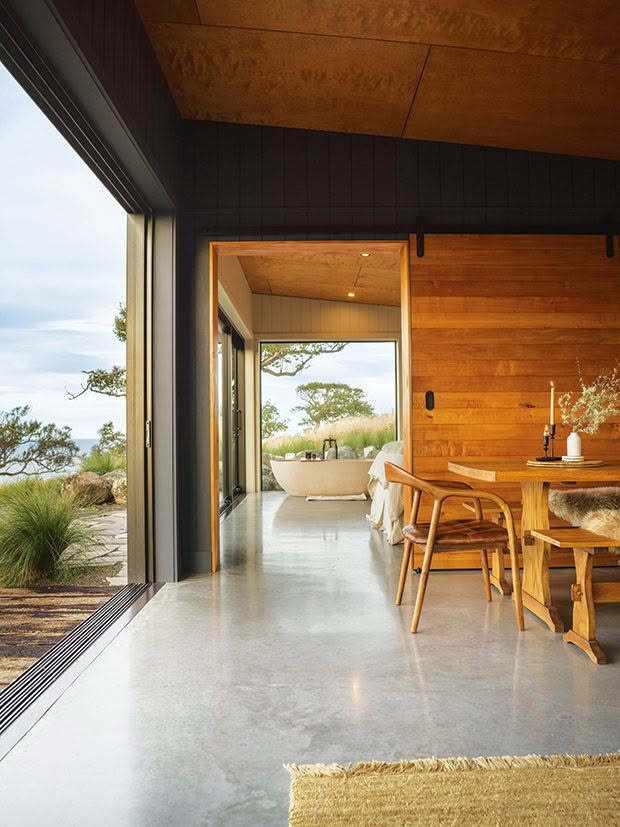
Big Hill, on Banks Peninsula, is the Craw family’s newest hilltop hideaway on their farm Ridgecliff.
The 420-hectare farm is spread across the small rural settlement of Chorlton on the ridges above Little Akaloa. Six generations of the Craw family have farmed it since it was settled by George Craw, a shoemaker who came from Scotland in the late 1800s, and his wife, Agnes. While the towns and cities beyond the farm’s borders have changed dramatically in that time, sepia photos displayed in the family home indicate little change to the farm since George’s grandson, Victor Craw, rode horseback around these hills, herding one of the country’s first-ever flocks of distinctive south suffolk sheep.
Victor’s son, a World War II fighter pilot, retreated to nearby Little Pigeon Bay after the war, while Victor’s daughter tended Ridgecliff. She had no children wishing to carry on the family tradition, so it was bought by her nephew Alastair and his wife Sue in the early 1990s. These days, it’s in the care of Alastair’s son Hamish Craw, his wife Annabel, and their three children. While its wild and rugged coastal farmland resembles the days of George, Victor and Alastair’s respective tenures, Ridgecliff is no longer a pastoral sheep and cattle farm. It’s now home to several buildings, in addition to the recently renovated heritage farmhouse, named Accrington, and a modern hilltop hideaway.
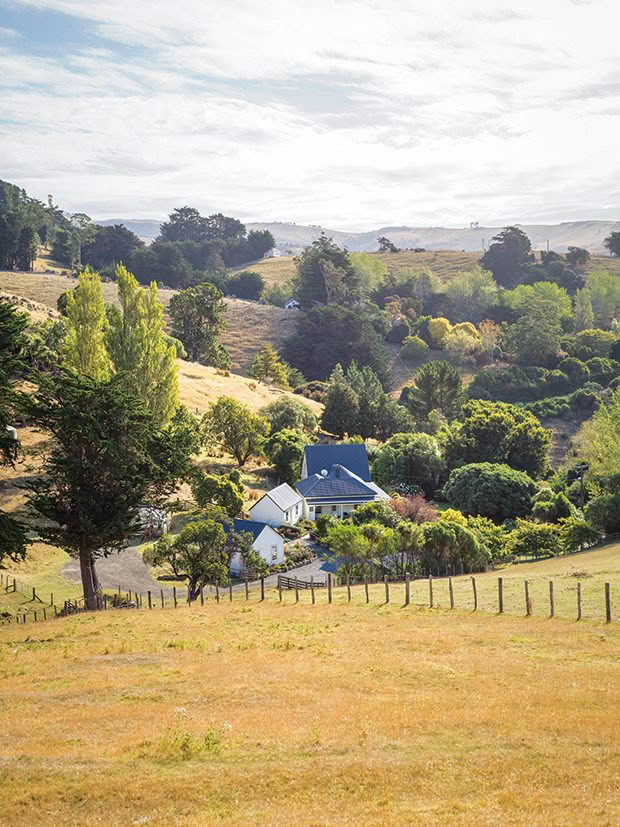
Annabel and Hamish restored Accrington, the farmhouse built in the late 1800s, to its former glory, adding accommodation in the renovated attic and in an outbuilding named “Victor’s honey shed” in honour of a past relative.
So much change probably wasn’t front of mind for Hamish when he first decided to give the farmhouse a gussy-up almost 20 years ago. When his parents took over the farm, they made the most of the coastal views by building a new brick abode on a picturesque hilltop. The original 1886 farmhouse was left empty. “The odd person would stay in it over the summer, but it was left to its own devices.”
Hamish decided to take on Accrington’s renovation as a personal project, one he shared with his new girlfriend Annabel when he invited her to visit the historic farmhouse on Chorlton Road.
“Right, I have a project for you,” he told her from his spot amid the prolific weeds. Says Annabel: “I arrived, and he was pulling out masses of barberry from the garden. I thought: ‘What have I got myself into?’”
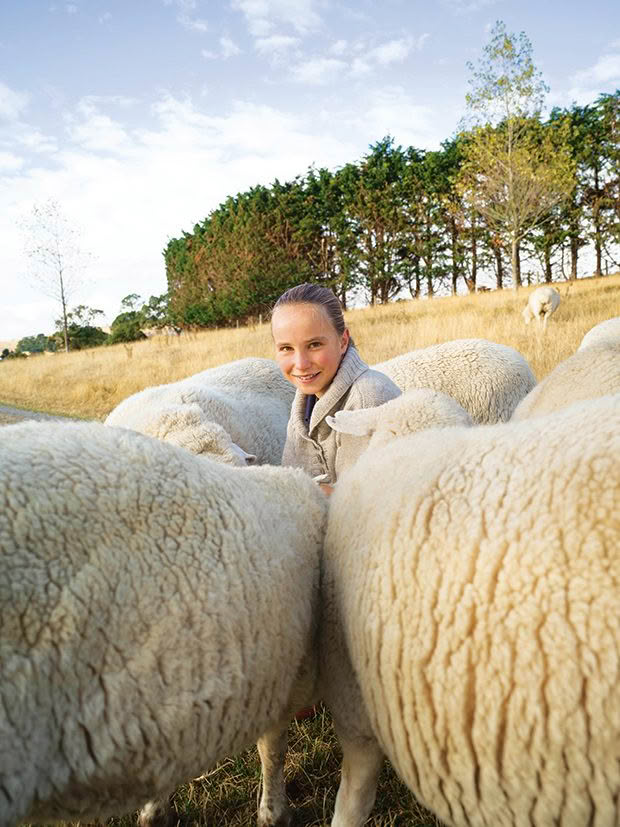
Eldest daughter Harriet among the lucky sheep who are happily established as family friends — not tucker.
Perceiving the monumental task ahead in the garden — and beyond — might put many off. But not Annabel. “I’m from a long line of gardeners. I thought, ‘Well, this could be fun’,” she recalls. “And Hamish had a plan. He’d already decided what he would do and when he would do it.”
“Had I?” he asks.
“I think you were already across it, right? Because the first time I visited, you were already in the garden,” she responds.
“Oh, that was all for show,” Hamish says with a grin. “There was a bit of work to do, wasn’t there?”
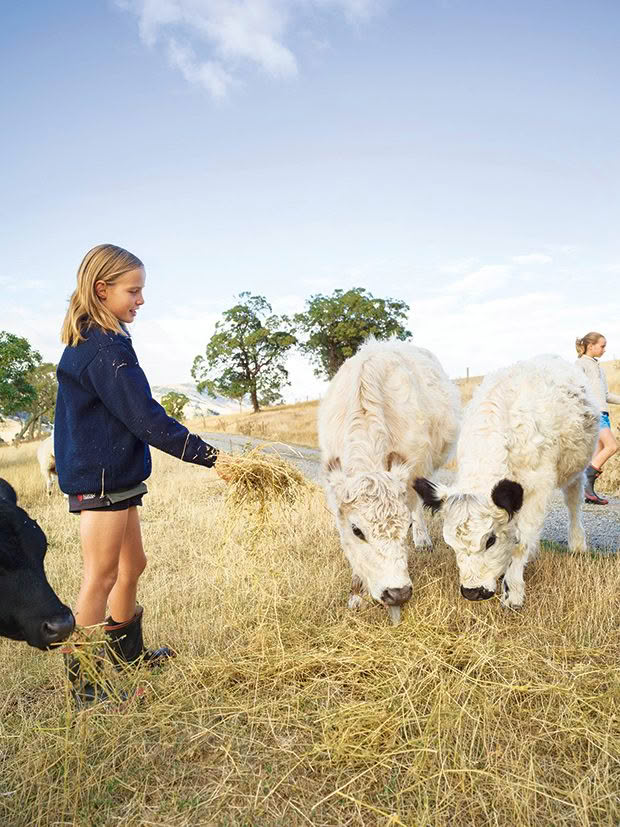
Charlotte has an affinity for animals. As with the sheep, cows Lottie and Stella are family pets — and a step towards Charlotte’s dream of owning some scottish highland cattle.
Was there what? The garden was overhauled, interiors painted, and the kitchen shifted from its traditional spot at the back of the house to a spot overlooking the large pōhutukawa and newly landscaped garden.
It was ready to move into about the time the two were engaged. Renovation stages marked the following decade between the births of their three children: Harriet, Charlotte and George.
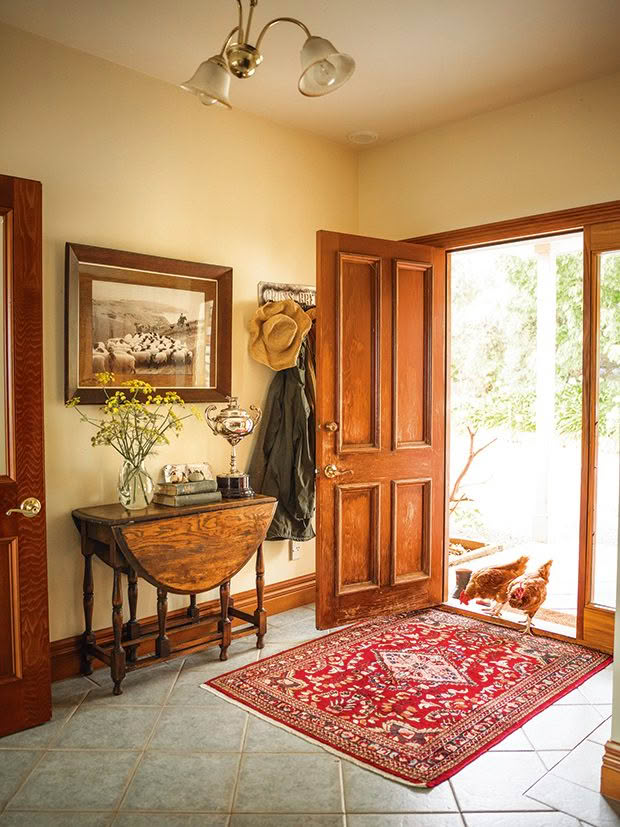
A photo of Victor with his flock of south suffolk sheep hangs in the entrance to the Craws’ home.
When Alastair and Sue retired to Akaroa in 2016, the farm succession saw history repeat. Hamish, Annabel and the children moved into the brick house up the hill that boasted beautiful views. Once again, Accrington was left empty. The idea was to rent it out long term, which was successful for 16 months or so. But when the tenants left and demand proved elusive, the couple thought: why not try the Airbnb concept, which was beginning to take off? “We had some excellent traction. We hadn’t created the story around it yet — it was merely a house.
“We thought this might have some legs.”
Best-laid plans to renovate the attic into additional bedrooms while they lived in Accrington had fallen by the wayside as they didn’t need the extra space. Yet more and more groups of considerable size sought out the property. “I think the product we have in Accrington is unique in the size, so we were finding we were getting these lovely large multi- generational families or groups of girlfriends on getaways.”
The question arose: “Are there a few more beds that can be crammed in?” The attic was eventually converted into two more bedrooms, with a stairwell built so guests weren’t forced to scale a ladder to an attic manhole, as early residents might have.
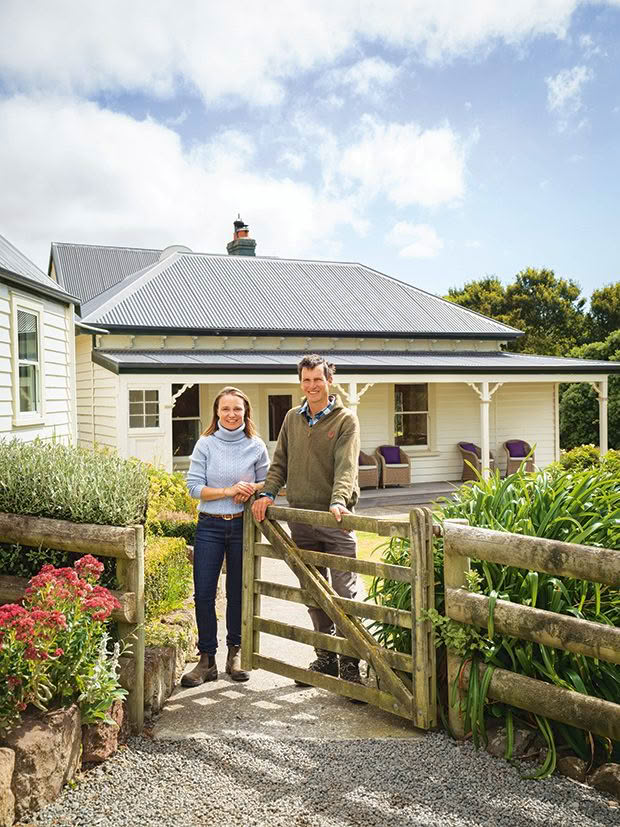
“What’s blown us away with Accrington is how much people love the history behind it. We’ve wanted to make it feel like people are coming home to their family farm — to give a little taste of what it might feel like,” says Annabel. “That’s been a big part: to give people the experience and understanding of the property, especially regarding the house.”
Guests experience the reality of farm life for a few days. Memorable moments for one family on holiday from the United States include hands-on help birthing lambs. According to the family’s 14-year-old, this far “out-cooled” the expensive glacier helicopter trip her parents had forked out for days earlier.
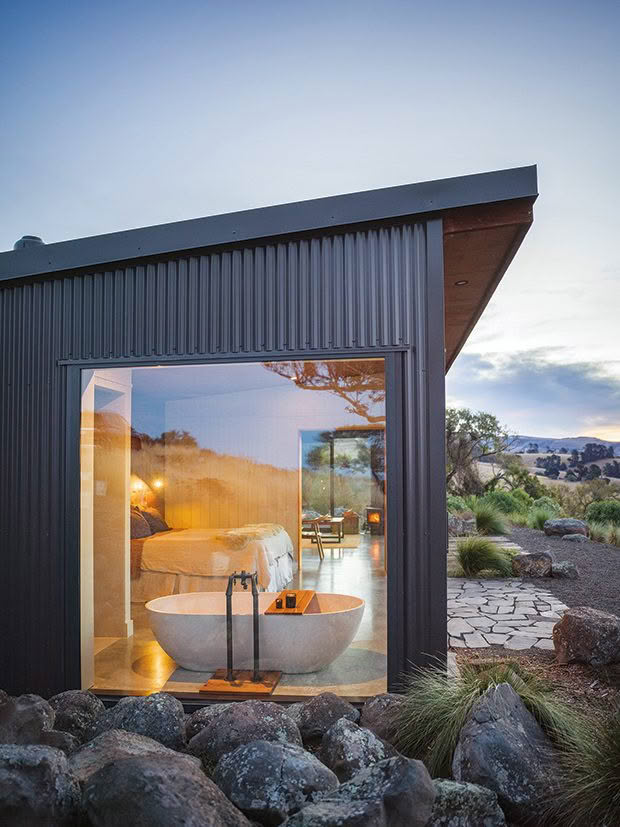
While guests note how peaceful the farm feels, the early years of juggling work and family proved anything but for its owners. Lengthy commutes over the hills and overnight city stays were the norm for Annabel, who consulted to several dairy industry organisations until 2019. “It was a bit crazy for a while there. It got to a point where I would be in a motel two days a week, and Hamish would be here looking after three kids under seven by himself.
“I’d call at 8pm to say goodnight, assuming all the kids were in bed, and Hamish would say: ‘We’re out on the farm checking a stock issue, and the kids are asleep in the back of the truck …’
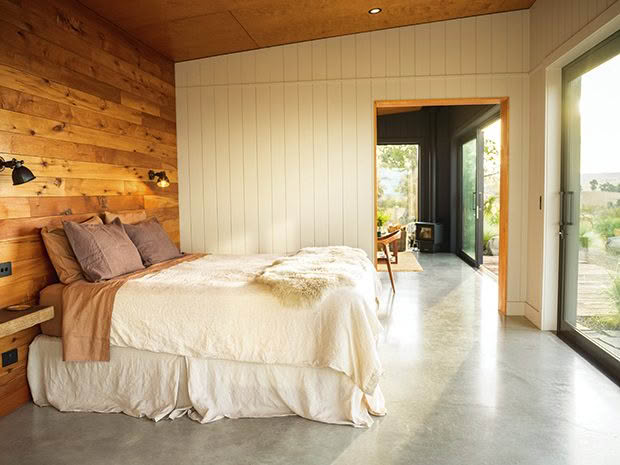
The tan and cream shades of the bedroom were inspired by the dry grasses blowing in the breeze outside. All aspects of the retreat — including a raw concrete bath, bed and rain-head open shower — are angled to make the most of the main attraction … that view.
“It did get to a point where we thought something had to give. But we did it for the right reasons: to grow our equity until we thought there was enough opportunity on the farm to give it a real go and start getting more creative and developing our opportunities.
“That was a moment of real change.”

While the exterior is rustic and minimal, inside, Hamish and Annabel take care to ensure guests want for nothing: a fully equipped kitchen, French linen on the king-sized bed, locally made toiletries and books to browse while lounging on the couch. “We try to ensure everything is ready. Sometimes, guests say, ‘Oh, we see there’s a fire — is there firewood?’ and we think, ‘Of course there’s firewood.’”
Further renovation efforts during the world’s pandemic pause opened even further possibilities. What was once Victor’s honey shed was converted from derelict storage space into two freshly panelled bedrooms. Another shed helped solve a continual weather conundrum: requests for weddings at Accrington had been refused out of fear of what would happen if it rained.
During lockdown, the family gutted and refreshed the seed shed, which is now a small event space to allow for intimate weddings. Their first wedding was held on Labour Weekend 2022 — just. “The bride was driving up and the last of the shingle was going down on the driveway.
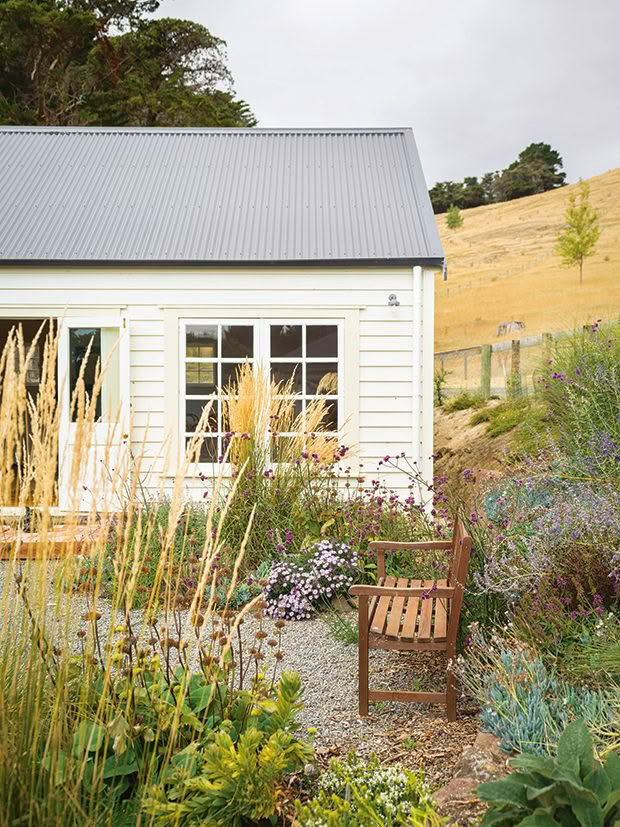
Originally a space to store cocksfoot seed, this shed was gutted during the pandemic and renovated as a boutique events space. It has been the venue for half a dozen weddings, a few parties, even a yoga retreat. Local Akaroa restaurant Ma Maison supplies catering.
And the bride said, ‘Oh, is this just a last-minute tick-it-off?’ Hamish was thinking: ‘If only you knew.’ We were painting the walls as they came up the driveway.”
With Accrington providing a stay steeped in history and old-school charm, the family knew their second accommodation had to offer something different. “There’s another aspect of the peninsula; we wanted to provide something that made the most of that raw, wild, expansive beauty. “We’d been toying for a few years — how do we want to pitch it? A Glamping thing? But we concluded we wanted something that worked during all seasons, something modern and luxe that brought together the sea and the country.”
- Accrington is steeped in old-school charm. Interior design books inspired Annabel with the décor. Grooved panelling on the walls of the two-bed honey shed was painstakingly hand-jigged by Hamish and Annabel after the pre-grooved ply they were supplied proved faulty. “We spent weeks and weeks planing that. We would put the kids to bed then go to the woolshed to work on it for a couple of hours every night.”
The result is Big Hill, a one-bedroom cottage tucked away in a far-flung corner of the farm, high on 18 hectares of farmland and regenerating native bush. It has expansive views over the fretting sea of walking-access-only Raupō Bay.
“The best time is when it’s wild weather: when the sea is crazy and you’re snuggled up there.”
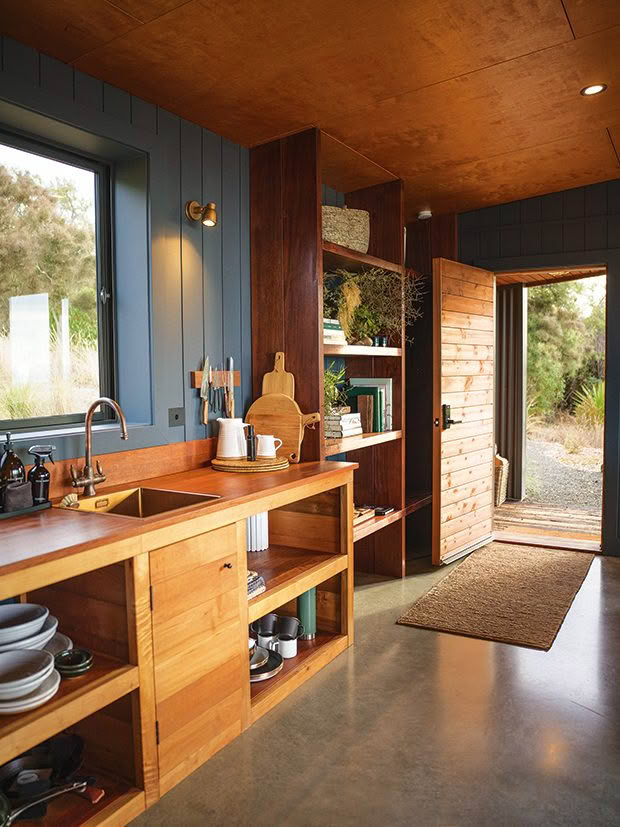
How do you build a luxe concrete accommodation on a farm hilltop? The couple says thank goodness for a John Deere tractor. “The hardest part was pouring the concrete. It was a nightmare. It took us six months: the truck broke down the first time. Then we had those massive rains, and the roads were damaged. On the next attempt, the concrete pump broke down.”
When the new concrete truck finally reached the hilltop, the supplier somehow forgot to communicate that it had downsized one of its trucks.
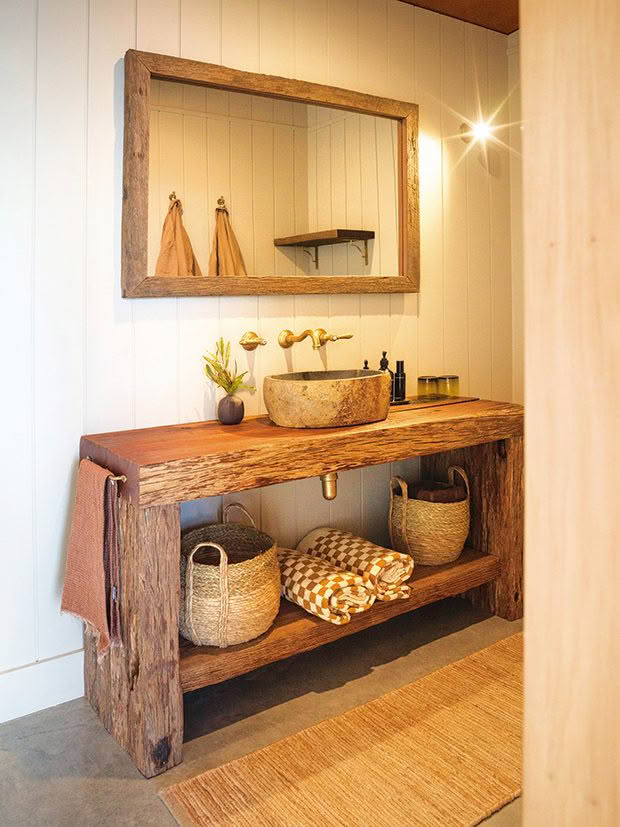
“The new one broke down — again — on the top of the hill, but they managed to get it going. I looked at it and said, ‘You’ve got to be kidding me; you’re not going to have enough concrete,’” says Hamish. “We were watching it get poured in, holding our breath. By the end, there was maybe a third of a wheelbarrow of concrete left.”
Big Hill opened during the summer and has already hosted travellers, both sets of parents, and several lucky local raffle winners. For parents Alistair and Sue, who were treated to a stay for a recent wedding anniversary, it proves a slightly more luxurious sleep on the farm than in years past. “Mum says when Dad disappears, she’s moving over to Big Hill,” says Hamish. “They were blown away by it. It’s in their hearts, this place.”
The impact his family farm now has on visitors from around the world is slightly surreal. “I must admit that I’ve gotten a lot more out of the hosting side than I ever thought I would, seeing families enjoying time on the farm,” he says.
“It certainly makes you realise what you’ve been taking for granted and makes us more appreciative of how fortunate we are.”
JUST SAY ‘HI’
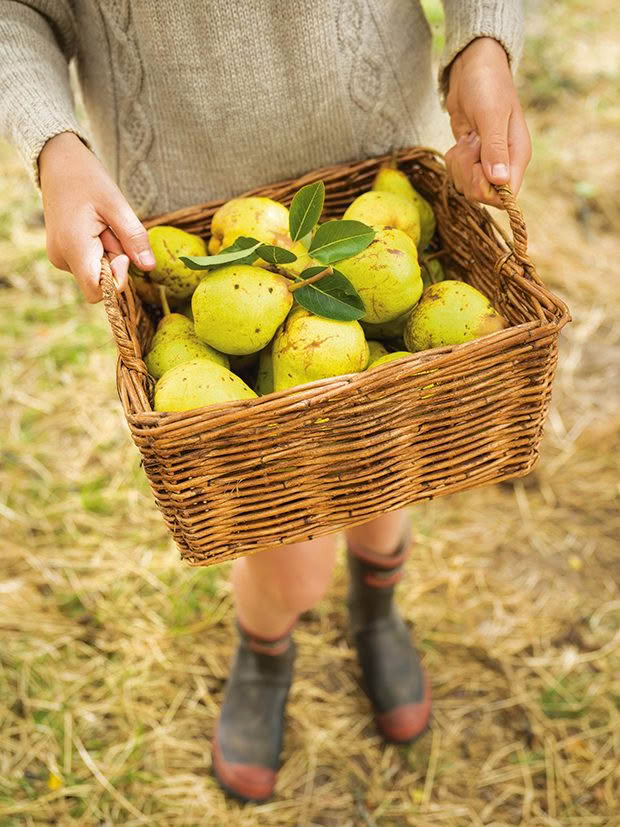
“I remember when we had our first guest, I was so nervous, thinking ‘What are they going to say?’” says Annabel. “And then it happened, and they had a great time. And you think, ‘Oh my goss [an Annabel catchphrase], we just did it.”
The family tries to offer a “quite candid” farm experience. “We don’t plan activities; we go about our lives. We just invite them to join in if we see an opportunity for guests to experience something. In the spring, if there are children, we’ll let them help feed the lambs, or if Hamish is in the woolshed, we’ll say, ‘Feel free to watch the shearing and say hi.’
“The other thing I have learned is it’s just about the little things. When it’s cooler, we put hot-water bottles in home-knitted covers at the ends of the beds, and people love them. Little things make people feel at home.
“We also always put out lots of fresh flowers. Often, the women who come are the ones who give a lot to their families and make everyone else feel special. We like to make them feel like they are getting some attention too.
Annabel has one more tip: “We focus on providing flexibility in the experience where possible by accommodating people’s needs. And listening and learning from feedback — even little things like what types of pots and pans would come in useful.” ridgecliff.co.nz
PROTECTING THE FUTURE
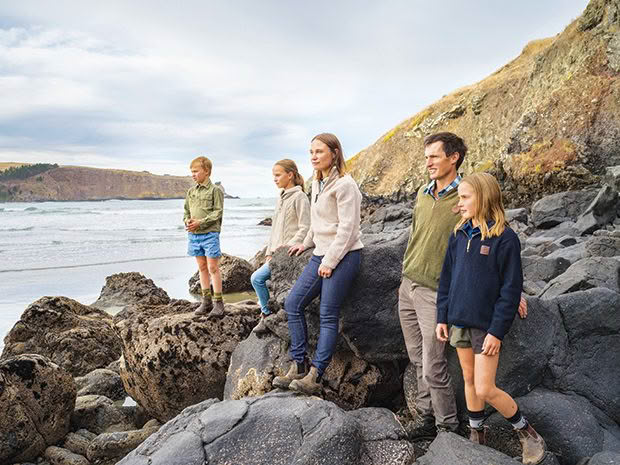
Guests are encouraged to explore the farm on foot over numerous walking tracks. A favourite trek is to the walking-access-only Raupō Bay, often the site of a Craw family picnic. Hosting families at the farm is a source of inspiration for Hamish and Annabel. “I must admit I’ve gotten a lot more out of it than I ever thought I would … To go down and see families enjoying the farm reminds us a lot about spending quality family time,” says Hamish.
Hamish and Annabel have taken on significant biodiversity regeneration projects to protect the land for future generations — including their already farm-mad children — after assessments revealed Ridgecliff’s ecological significance. Sites around the farm contain biodiversity that is unique, rare or important to sustain. “It was surprising. I guess we were more focused on the farming aspect of the land. It made us stop and realise there’s more than just the farm — there are other important aspects to the land.”
The couple set out a biodiversity plan for areas they wanted to protect and enhance while working the farm. Over the past four years, the family has planted over 10,000 trees on the 420 hectares to speed up regeneration and increase the diversity of plant life.
“That whole aspect has been significant for us as it’s provided a lot of opportunity for our children. They’ve been able to be involved with seed collecting and tree planting. Their knowledge — especially for their age —is amazing.”
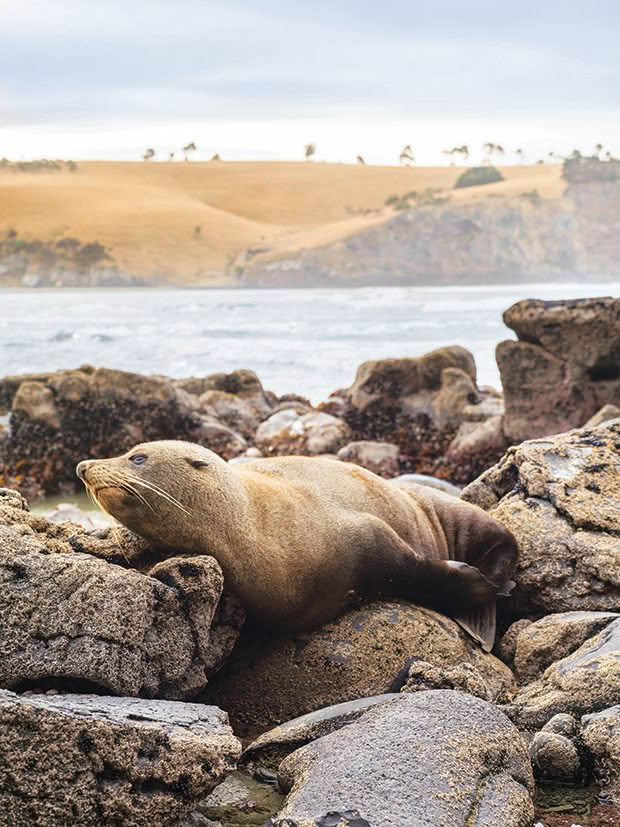
Says Hamish: “We’ve been working on getting that balance between productivity and protecting what’s there — it’s been a good learning experience for us. You start to see the farm as more than just growing grass. You start to see it for the beauty of its native trees.”
Says Annabel: “It’s been enjoyable when out farming, too. You’re out on the farm, and you start to think of it as almost like a massive garden. When you’re out shifting sheep and the Clematis paniculata (leather flower) is flowering in the trees, you start to see it through a different lens.”
 This article first appeared in NZ Life & Leisure Magazine.
This article first appeared in NZ Life & Leisure Magazine.
